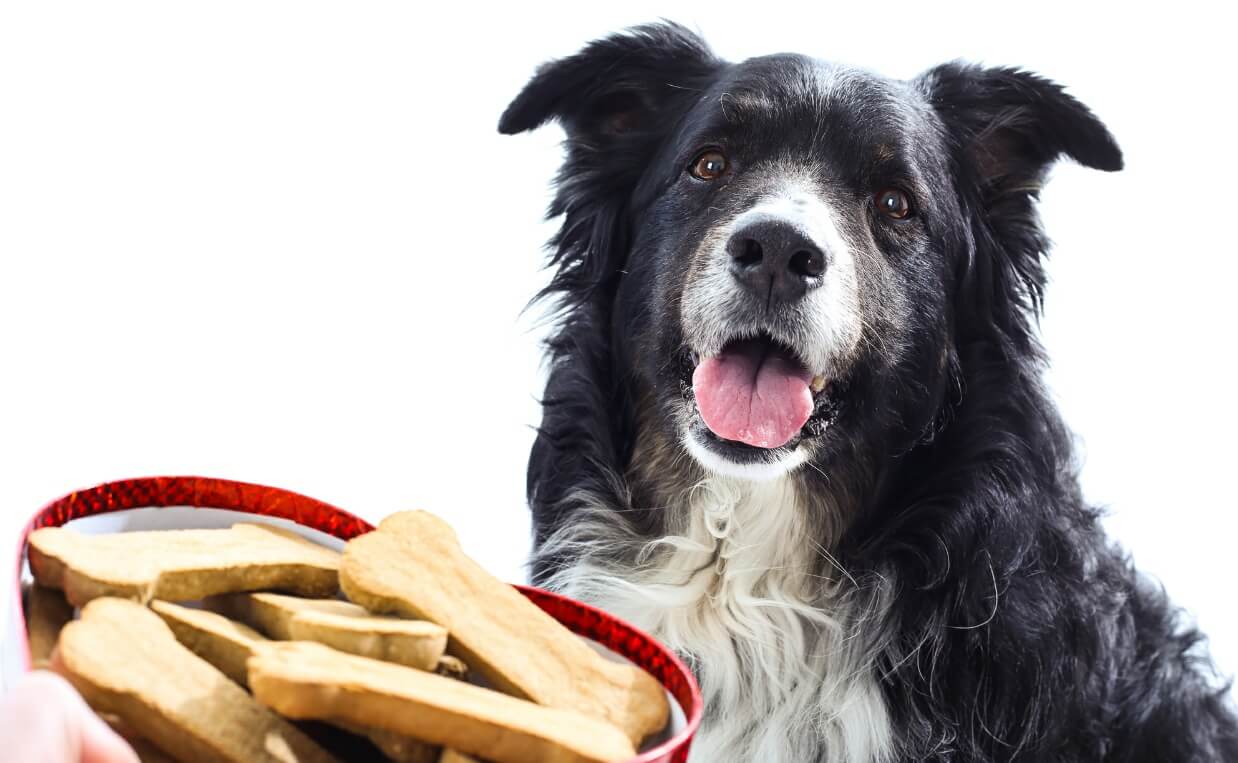
As dog parents, we love to give our dogs treats. When it comes to choosing the best dog treats, the options are seemingly endless. With all the options on the market, how do you choose the right treat for your dog?
Advantages of Dog Treats
Dogs deserve an occasional treat. Treats can be a good thing. Some are designed to supplement your dog’s food, enhancing nutritional benefits. A favorite treat can also provide motivation for your dog during training or when you want to encourage positive behavior.
When you choose healthy (but yummy) treats, you can feel good about rewarding your dog, and your dog will feel good about pleasing you. This helps to strengthen the bond between the two of you.
When Good Treats Are Actually Bad
Many of the treats dogs love are high in fat or sugar. These treats are not good for your dog. They can be a hidden cause of weight gain especially since it’s easy to lose track of the number of treats you are giving out during the day.
Nearly half of all pets in the United States are overweight, which puts them at higher risk for a number of health problems. If you suspect your dog is overweight, be sure to make an appointment to see a veterinarian to determine what food, including treats, you should be giving your dog.
Read more: 5 Tips for Preventing Obesity in Your Dog

Table Scraps as Treats
It’s hard to resist those pleading doe eyes under the table but if you give in, you may create a monster who constantly begs for food, even when it’s inappropriate (i.e. when your boss comes to dinner).
Table scraps tend to be high in fat and sugar, which can upset your dog’s digestion as well as ruin his or her appetite for the nutritionally balanced food you buy for him or her.
Table scraps often contribute to obesity. It’s best to keep your dog out of the dining room when the family is eating.
Choosing the Right Dog Treats
When it comes to dog treats, it’s not just the taste but also other aspects to consider. Treating your dog to treats should enrich their life experience by enhancing their health and enjoyment.
Here are some tips for choosing the right treats for your dog.
-
Age
There are treats designed specifically for your dog’s stage of life. Treats for puppies will be softer and easier to chew and have higher levels of protein (and calories) since puppies are growing so rapidly.
Dogs are considered full grown at one year (a bit older for giant breeds, like a Great Dane). They are considered middle age by 5 to 7 years. In between is the young adult life stage. The nutritional goals of this time in a dog’s life are to maximize health, longevity, and quality of life. Obesity is a concern even in young adulthood. Unless your dog is engaged in lots of activities that require large numbers of calories, it’s very important to match calorie intake with lifestyle. Be careful to feed your young adult dog healthy treats that will contribute to the overall nutrient profile and are not fed to excess.
Dogs who are 3-4 years old through the beginning of the last 25 percent of the dog’s estimated lifespan (this varies depending on breed and size) are considered mature adults. Mature adults are not quite as active as puppies or young adults, so their caloric needs may be lessening. Be sure you are taking into consideration the number of added calories you are giving your dog in the treats you are providing.
Dogs who are 25 percent or older of their estimated lifespan are considered senior dogs. Senior dogs have different nutritional needs than other stages of life. Younger seniors need to be careful about their weight, but older seniors may need more protein.
Be aware of the stage of life your dog is in, and moderate caloric intake from treats accordingly.
-
Health history
If your dog has a medical history, make sure you visit your veterinarian to know the right dietary approach for your dog, including treats. Like people, canines may have food restrictions based on their health. Consulting an expert will give you an idea of what specifically your dog needs or shouldn’t have.
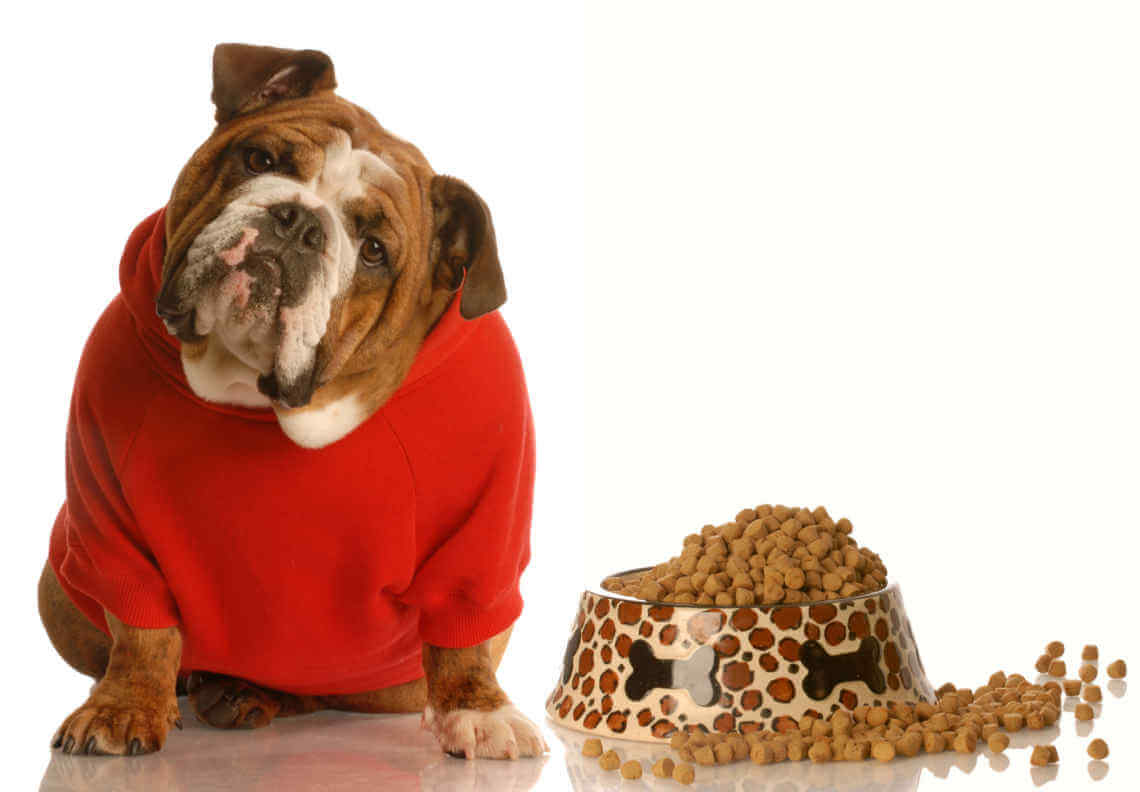
-
Ingredients
The ingredients in treats are one of the most important aspects to consider when choosing dog treats.
-
Choose treats made in the United States.
Especially avoid treats made in China. If you choose to buy any treat made in China, your dog may be at risk. Chicken jerky treats, chicken tenders, chicken strips, chicken treats, or sweet potato treats can all pose a potential threat. Many of these treats are contaminated with a highly toxic pesticide known as phorate. Phorate is an extremely toxic organophosphorus compound and is among the most poisonous chemicals commonly used for pest control. Phorate – and other toxic chemicals found in China-sourced dog treats – can pose a health risk to your dog.
-
Choose treats containing natural ingredients.
Treats loaded with fat and sugar are not good for your dog! Look for dog treats made with whole grains like oats or quality, single source proteins like chicken, lamb, or salmon.
Most commercial dog treats available today contain unwanted fillers, synthetic coloring, preservatives and artificial flavoring which can have a negative affect on your dog’s health. In general, look for treats with fewer ingredients which tend to be a better quality. Also, if your dog has a sensitive stomach or is prone to allergic reactions, single-ingredient treats are the best option.
Avoid dog treats if you see any of the following in the ingredient composition:
-
Preservatives
While shopping for dog treats, choose a brand that does not include any preservatives, such as potassium sorbate, ethoxyquin, BHA, BHT, or calcium propionate.
-
Artificial coloring
Dogs do not care what color the treats are they munch on. Treats are given artificial coloring so they appeal to dog parents. Avoid buying treats with artificial coloring as it is unnecessary and can prove to be harmful.
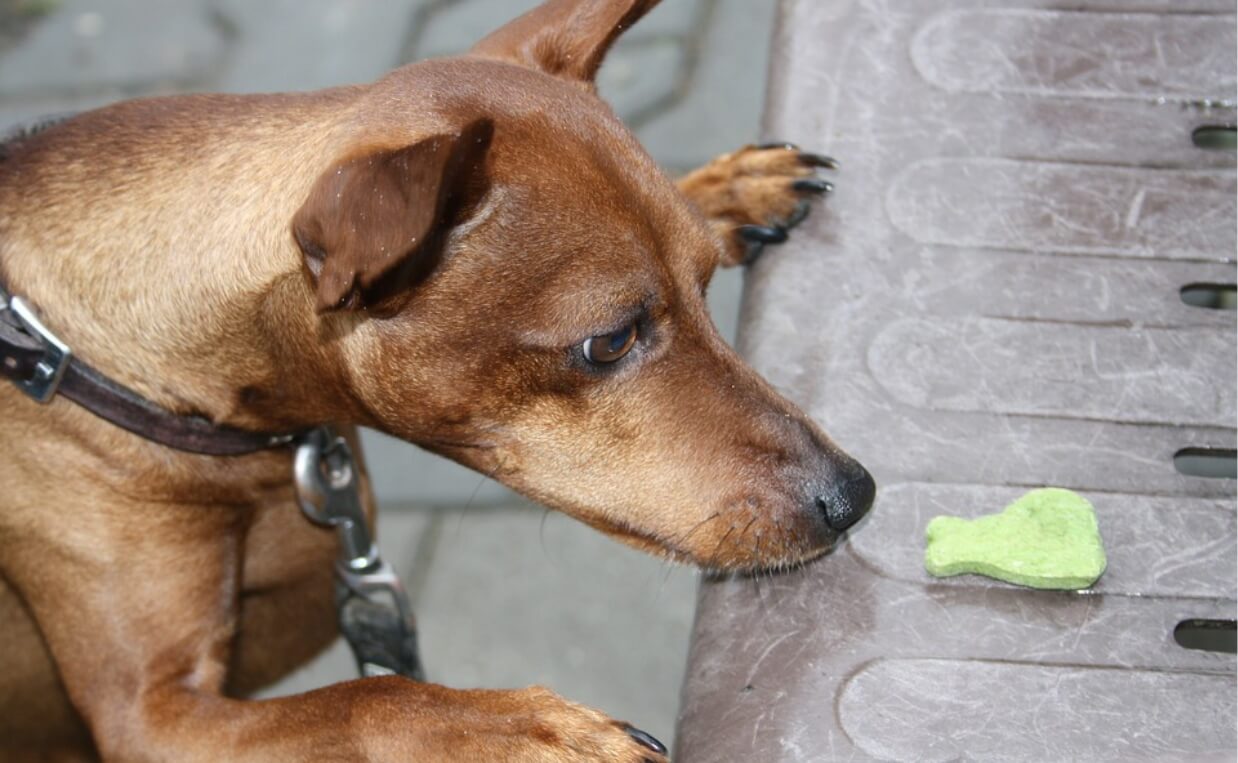
-
Chemical humectants
Chemical humectants are propylene glycol are sometimes used in dog treats to prevent it from drying out. It is also used to prevent discoloration in meat. This ingredient can slowly disrupt the digestive system and lead to intestinal lesions as well as blockage. There are other food-sourced, natural humectants not harmful to pets, so be sure to check the label before purchasing.
-
Synthetic chemical sweeteners
Chemical sweeteners like sorbitol are added to dog treats to enhance the taste. However, sorbitol can cause many health problems such as obesity, tooth decay, nervousness, and allergies. Sorbitol can also cause arthritis and digestive issues like stomach cramps, diarrhea, vomiting, and bloody stools. Another disadvantage is chemical sweeteners will make the treats taste sweet to the dog, making your dog reject less sweet and healthier food options over time.
-
Texture of the treats
Soft dog treats are great for training because, compared to crunchy ones, they’re easier and faster for your dog to eat. Plus, softer treats are usually smellier. Every dog has a hierarchy of rewards, and most of them would put smelly items like cheese or bacon at the top.
Soft treats are better for puppies and senior dogs, who may have trouble chewing harder substances.
Treats that are a little hard and firm will be helpful for adult dogs in reducing plague and tartar and maintaining oral health. Just be sure the treats aren’t too hard or your dog might break a tooth. If you can stick your thumbnail into the treat it isn’t too hard, but if it’s too hard for your thumbnail test, it is too hard for your pooch.
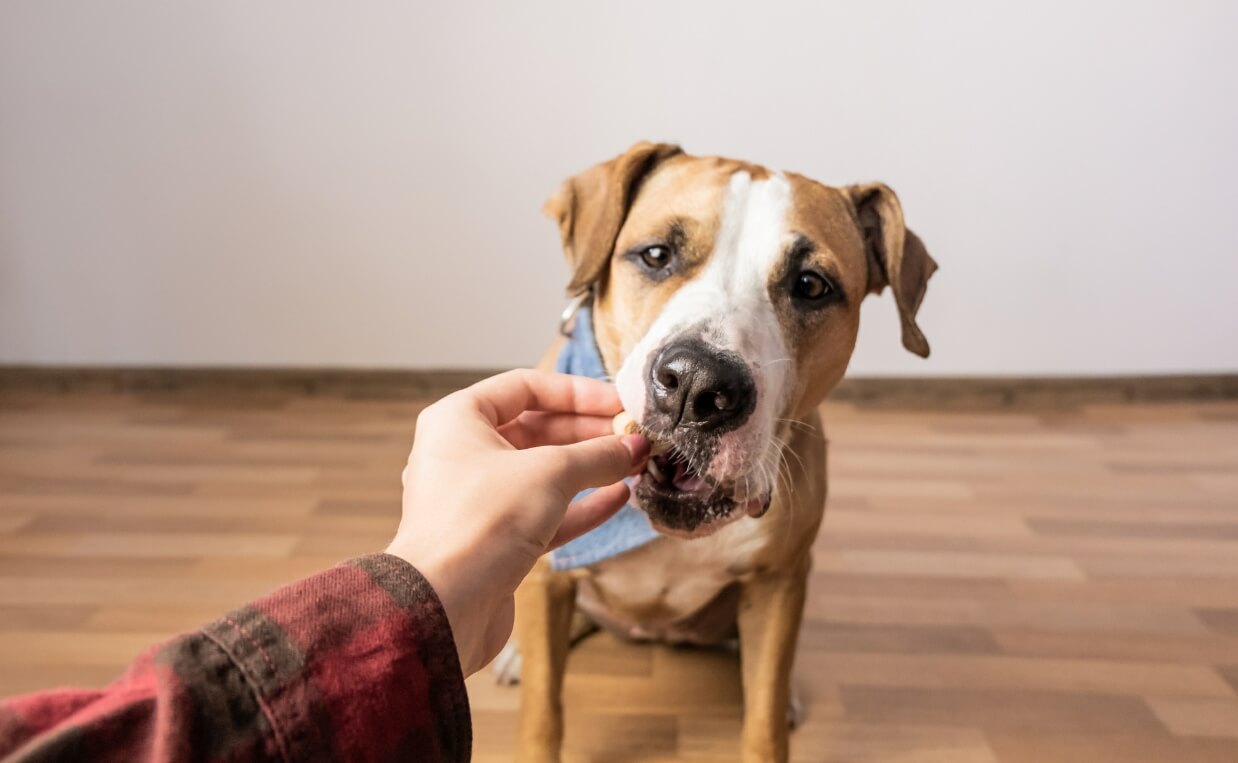
-
Types of dog treats to avoid
Many dog treats pose serious dangers to your dog’s long-term health. To keep your pup safe, avoid these eight types of dangerous dog treats.
-
Treats made in China
I’ve already mentioned this but avoid buying any treats made in China. While most reputable pet stores no longer carry the ones identified to cause Fanconi Syndrome (which could result in fatal kidney failure), they’re still abundantly available online and in some pet supply stores.
The FDA has warned against dog treats made in China. Inspections were conducted on various dates in 2021 and revealed violations of the FDAs Current Good Manufacturing Practice requirements for animal food, which caused the maker’s products to be adulterated. Read more here: FDA Warns Pet Treats Maker Due to Safety and Sanitation Violations
As of 2015 there were more than 5,000 complaints and 1,100 canine deaths related to dogs ingesting treats made in China.
-
Rawhide chews
Rawhide is a by-product of the leather industry. It is the discarded second layer of animal skin, which contains very little economic or nutritional value. Because the raw material is so cheap, the treats they are processed into are also some of the least expensive options for dog lovers.
-
Actual animal bones
Bones from real animals are often marked as a natural chew toy, giving people the impression they might be safe. Undeniably, dogs love them. People believe animal bones help develop jaw strength and improve dental hygiene.
While all that is true, real animal bones pose a danger to your dog’s health. Raw bones can be contaminated with harmful bacteria like listeria, e.coli, and salmonella. To kill off harmful bacteria, bones need to be cooked, which causes them to become brittle. Brittle bones can splinter and hurt your dog’s mouth. Or, bones can break, causing choking and intestinal damage.

-
Other animal parts
Many other animal parts are used as dog treats or chews. They’re usually by-products of the meat production industry. Among the most popular are hooves, antlers and pig’s ears. The danger in these types of chews is they’re hard enough to crack or break your dog’s teeth. They can also splinter, which can injure your dog’s mouth, block their intestines, or puncture their gut. Pig’s ears can cause vomiting, gas, or diarrhea. They can also produce more serious complications, such as pancreatitis, bloody diarrhea and obesity due to their high fat content.
-
Cancer-causing dog treats
Several chemicals used in dog food and treats have been linked with canine cancer. Among them is a food additive called Red #40 (also called Allura Red) used to obtain brighter, more vivid colors. Yellow #5 and #6 can cause hypersensitivity and cell damage.
Another cancer-causing agent used in dog biscuits and other treats is called Butylated hydroxyanisole (BHA), which has been linked to tumors in laboratory animals. This chemical was widely used in cosmetics, but international regulations now restrict its use. Although it is still legal to use in the U.S., the National Institute of Health (NIH) has listed it as a carcinogenic substance.
-
Sugary or artificially sweetened treats
Many manufacturers add sugar to dog treats to improve the taste. This is especially true when cheap and low quality ingredients are used. But sugar shouldn’t have a place in any dog’s diet. It can cause unhealthy weight gain and dental problems, but also serious illnesses like diabetes.
A more serious concern than simple sugars are artificial sweeteners. Substances like sorbitol and xylitol are even more dangerous for dogs. The use of sorbitol in both human and canine food has been controversial. For dogs specifically, it is known to cause stomach problems. Xylitol is poisonous to dogs and cause seizures, clotting problems, and even death.
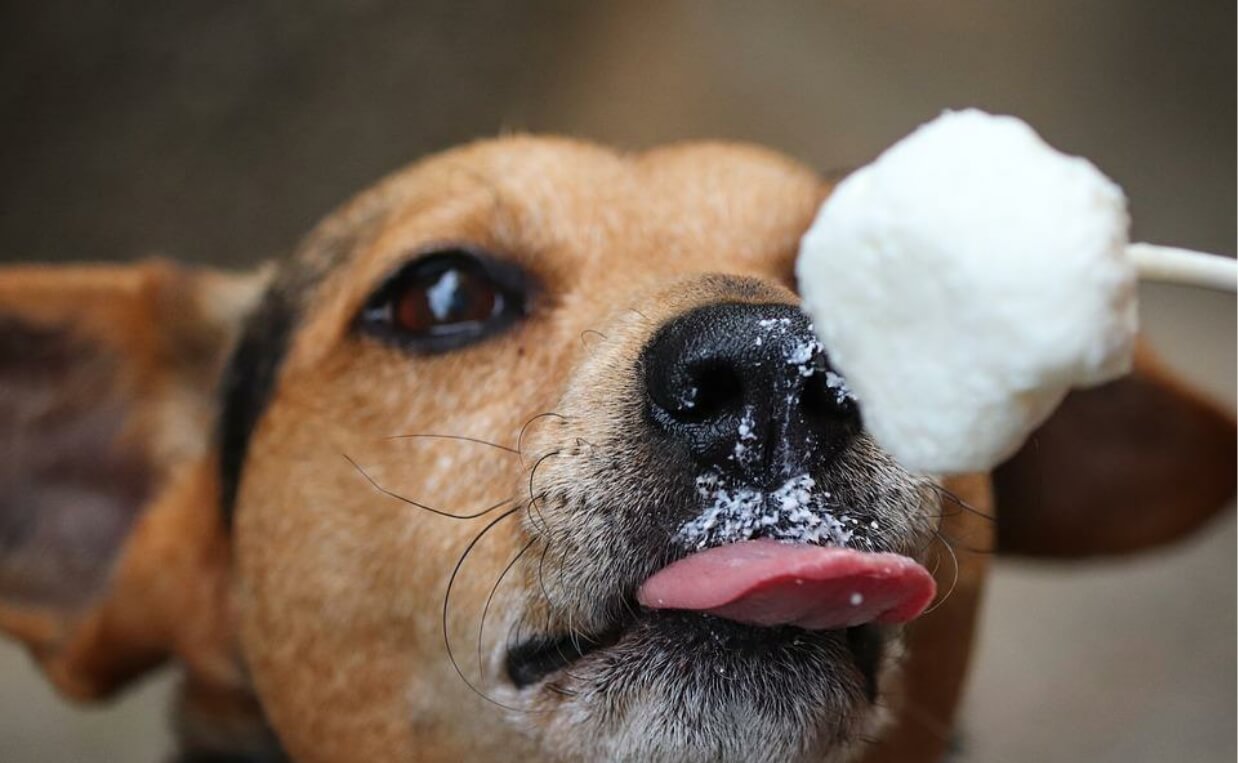
-
High starch options
Many dog food and treat manufacturers use inferior starch options as fillers in order to lower production costs. This practice has propelled the trend toward grain-free and gluten-free alternatives. But unless your dog has allergies and sensitivities, switching to a grain-free or gluten-free diet isn’t absolutely necessary. But, it’s essential you avoid kibble and treats with too much starch. Instead, opt for high-quality treats that use complex carbohydrates or are protein-based.
-
Toxic human food
Some human foods can get dogs really excited. The best part is they could be inexpensive and easily accessible treats. Besides, it’s difficult to resist tossing a few pieces of your own snack when your dog is giving you puppy-dog eyes. Although many human foods are safe for dogs, some are toxic and can make your dog severely ill.
Among the foods you should never give your dog are chocolate, grapes and nuts. You should also avoid anything that might contain garlic, onions or chives. Be especially careful during the holidays when your dog might have easy access to food spreads.
Learn more: The Ultimate Guide to Foods You Can and Can’t Feed Your Dog
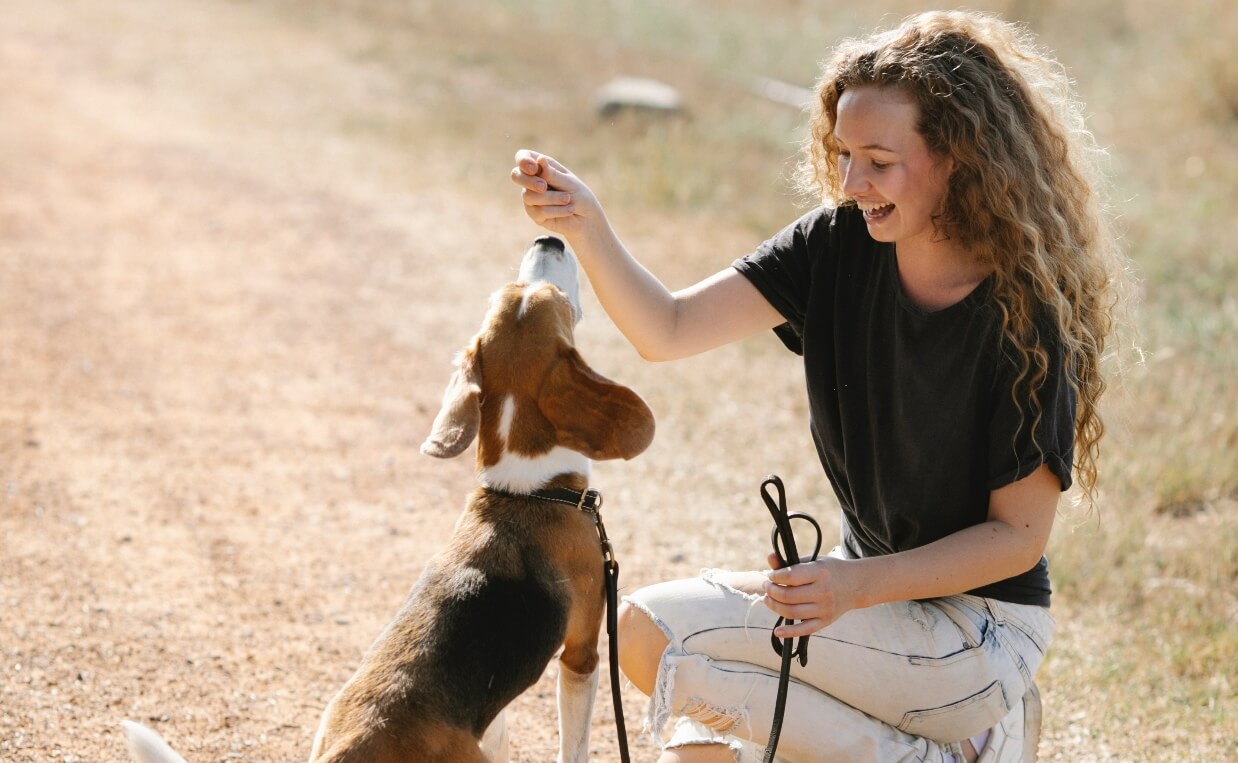
As a responsible dog parents, it is your duty to be mindful of the food and treats you allow your dogs to consume. Many options you can find in almost any pet store today can actually make your dog sick. But as long as you make a habit of checking the ingredients and are cautious with your choices, you should be able to find treats your dog will love and won’t pose any danger to him or her.
What dog treats do you recommend and why? Please share in the comments below…

 Will Neutering or Spaying Calm Your Dog?
Will Neutering or Spaying Calm Your Dog? How to Provide the Best Care for Your Senior Dog
How to Provide the Best Care for Your Senior Dog Dog Friendly Cleaning Solutions
Dog Friendly Cleaning Solutions Healthy Easy Homemade Dog Treats
Healthy Easy Homemade Dog Treats What Every Dog Owner Should Know About Probiotics for Dogs
What Every Dog Owner Should Know About Probiotics for Dogs






I’d like to know if Fresh Pet dog food is OK to give to a dog. My Bassett Hound has been eating it for a long time. Her Vet stated last summer that her labs were perfect and is the perfect weight. It is AAFCO approved but I understand that is questionable. Please advise. Thank you! I am also concerned about “Blue Softies” dog treats.
Please check with your vet to determine if Fresh Pet dog food is OK to give your dog. Thanks for visiting our blog!